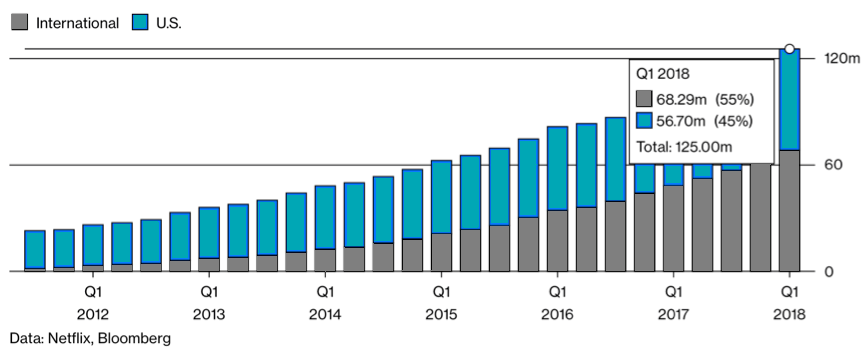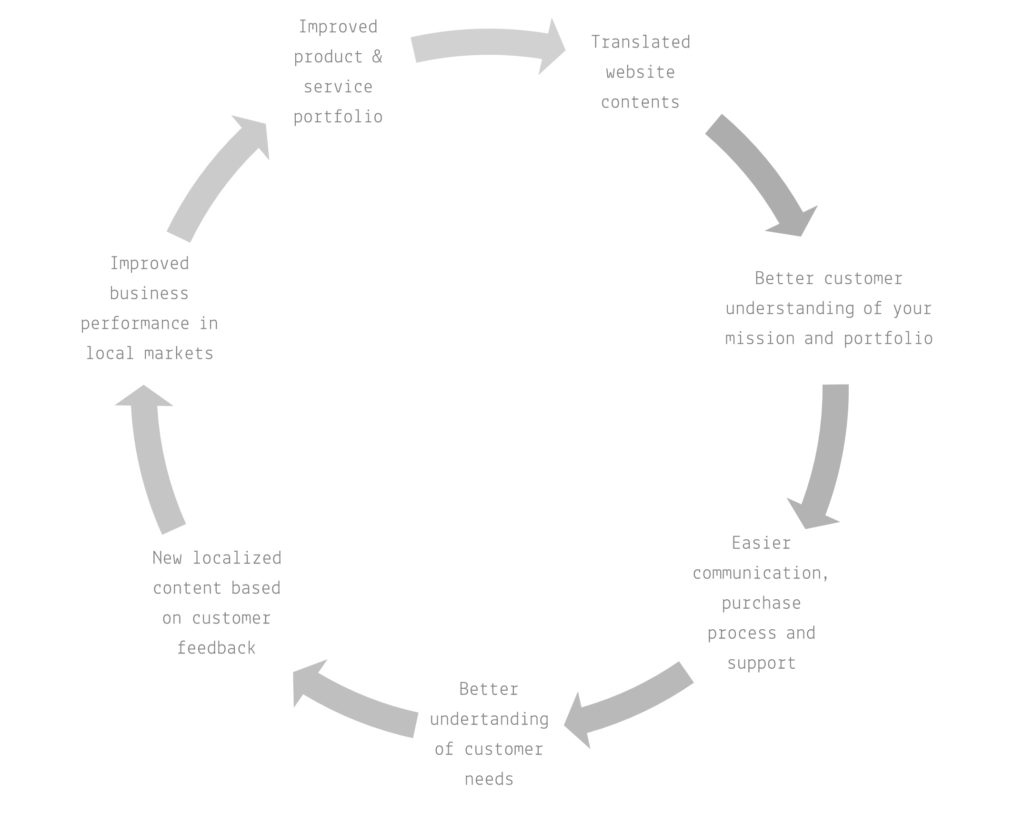6 reasons why you should translate your website
Nowadays, it is hard to imagine any business without an Internet presence, regardless of what they do or who their customers are.
Coming in all shapes and sizes, websites provide companies with a unique opportunity to dramatically expand their reach and make their products and services available to virtually anybody around the world.
Once you have defined the layout and the type of information your website will feature, there is an important decision to be taken: which language will be your first choice to provide such content?
Depending on your core business, the natural decision can be either your business mother tongue or English. However, once you have defined your content and feel comfortable with it, you will probably feel the need to add new languages to reach international customers and engage in communication: you GO GLOBAL.
In this blog post, we will explore how translating your website can help your business (along with some practical considerations you should take into account to ensure that the translated versions of your website will work as intended).
1) Customer Perception of Service is the Key to Strive
Having a loyal customer base largely depends on how much you care for them, take care of their needs, and show your willingness to help. Easier said than done. How can a business achieve this?
Customer focus is not only a fancy marketing term: businesses that carry out significant efforts to understand what their customers need and speak their language (literally and figuratively) are much better performers, in financial and reputation terms, than companies simply focusing on their own agenda and barely listening to what consumers have to say about their products.
Today, the relationship between companies and customers is no longer a one-way monologue where buyers are just passive listeners, but an ongoing exchange of information and feedback that results in portfolio updates and strategy changes to better serve customer needs.
This approach must be implemented at all levels, and your website plays a key role with a dual purpose: showcasing your products and acting as a contact point for inquiries. Once you have developed an effective website with functional and useful content (portfolio, contact section and a company description at the very least), it is time to make yourself available to international customers and think about translating your website.
2) SEO Results Are Vastly Improved
Running a website implies that your company wants potential and existing customers to visit and spend time checking the products and services they are likely to buy.
How can they possibly check your website if it is hidden on page 54 of Google Search results? Having good products is not enough. To attract your international customers, you need to translate your website so that it can rank in local search engines.
If you are not familiar at all with SEO, you can find plenty of good tips on the web to help you create a basic strategy that works, or tune your current strategy by applying more advanced tactics.
3) More Languages Mean More Customers
FACT: Netflix’s profit and reach increased dramatically as the amount of content available in multiple languages increased by 10x.
There is no way to find out the overall weight that a multilingual strategy alone has played in the dramatic rise of income and popularity of the bigger names in on-demand streaming media services. However, it seems reasonable to think that addressing customers in their own language and creating specific content for different countries has worked out like a charm.
This is a turning point: even if we have thousands of successful examples where businesses have applied the right strategy to port their website into foreign languages, there are even more cases showing how an unprepared setup or a naïve strategy can lead to embarrassing results, damaged reputation and, ultimately, market oblivion.
Therefore, whether you plan to translate your website to one additional language or create a massive multilingual portal featuring 15 languages, you do need to set up a linguistic strategy before you commission the translation of your website. Here are some practical considerations you should take into account to ensure that the translated (also known as localised) versions of your website will work as intended and attract the right type of visitors just like its original version.
Netflix Streaming subscriptions:

Netflix is just an example that can also be observed in many other industries and markets, where businesses that have played the language game wisely – starting from their website content – have witnessed a consistent expansion of their customer base.
Another benefit that comes with translating your website: conversion rates will also be higher. This is particularly important when it comes to translating your landing pages, that is, the very first experience your potential client has with your business as they reach your website.
4) Impact on Your Business Reputation
A company that cares about its content and its customers usually performs better than competitors which do not, but above all, it sets an example.
In short, the more translated content you provide to your local customers, the more they perceive that your company cares about them: this creates a lot of positive buzz around you, as customers publicly talk about your products (in their own language!) and discuss them on social media sites.
All this buzz will eventually arrive at your competitors and other industry players, so your overall presence will be greatly enhanced and -provided that you offer quality products and support- your reputation will improve significantly in local circles and globally.
Again, we are not here to tell you how you should define your internationalization strategy: you can find plenty of useful information on the Internet about successful business models in nearly every industry; however, all of them have something in common: they offer relevant content to their international customers in their own language and always keep an eye on local trends in order to connect with them.
5) Added Value Means Everything to Your Customer
The real value you provide to your customers by bringing translated content will eventually get back to you in a virtuous loop that could be summarized as follows:

Therefore, you should not simply consider translating your website content just as a means to selling more (which will be among the desired consequences, of course), but as a thorough long-term tactic to better communicate with your customers, understand their needs and fine-tune your actions in the long term to serve them properly and —yes— ultimately improve your performance globally.
6) Consider Your Long-Term Strategy
Does your website contain some static content you need to showcase for potential customers and make available to users? Or does it feature dynamic information that changes and needs to be updated on a regular basis, such as blogs and news?
Your website is much more than just a place to show your products or services. You can provide information to your potential customers, so that they may buy from you when they are ready. Providing this information in multiple languages, means more customers learning about you.
Choose your language and content by looking at your customer base
If you are one step closer to translating your website, you are probably asking new questions, such as how to choose the right language service provider or what language should you translate your website into.
Think about the following questions as a mental checklist you can use to help you drive your decisions:
- Are your international customers comfortable with your main language? Should you choose only a few specific languages for your website, which ones are emotionally closer to your target audience? This is particularly important when translating and localising an eCommerce site.
- Which are the key elements of your business that your customers must be aware of? Portfolio usually comes first, but what about your mission, your contact channels or your support section? If your website features a blog or a news section that requires regular updating, will it be part of your internationalization strategy and be marked for translation? In other words: which are the single pieces of information they MUST understand in order to complete the buying process and enjoy the product experience?
- Consider the implications of running a multilingual website. If you create content in a specific language, sooner than later your potential customers will have questions about your product or services, and you will need to fulfil their requests in the same language you used to approach them. Your business might not need to set up a 24/7 multilingual Customer Care Centre, but it is always a good idea to walk in your customers’ shoes and follow through the standard buying process —from item pickup through payment confirmation and sales support— in order to identify all the elements of your online content that should be translated.
Would you like to find out more information about what services you may need and how to make the most of your investment in translation? Ampere Translations is ready to help you – message us today!
You may also find this interesting:
Localisation as a sales booster

